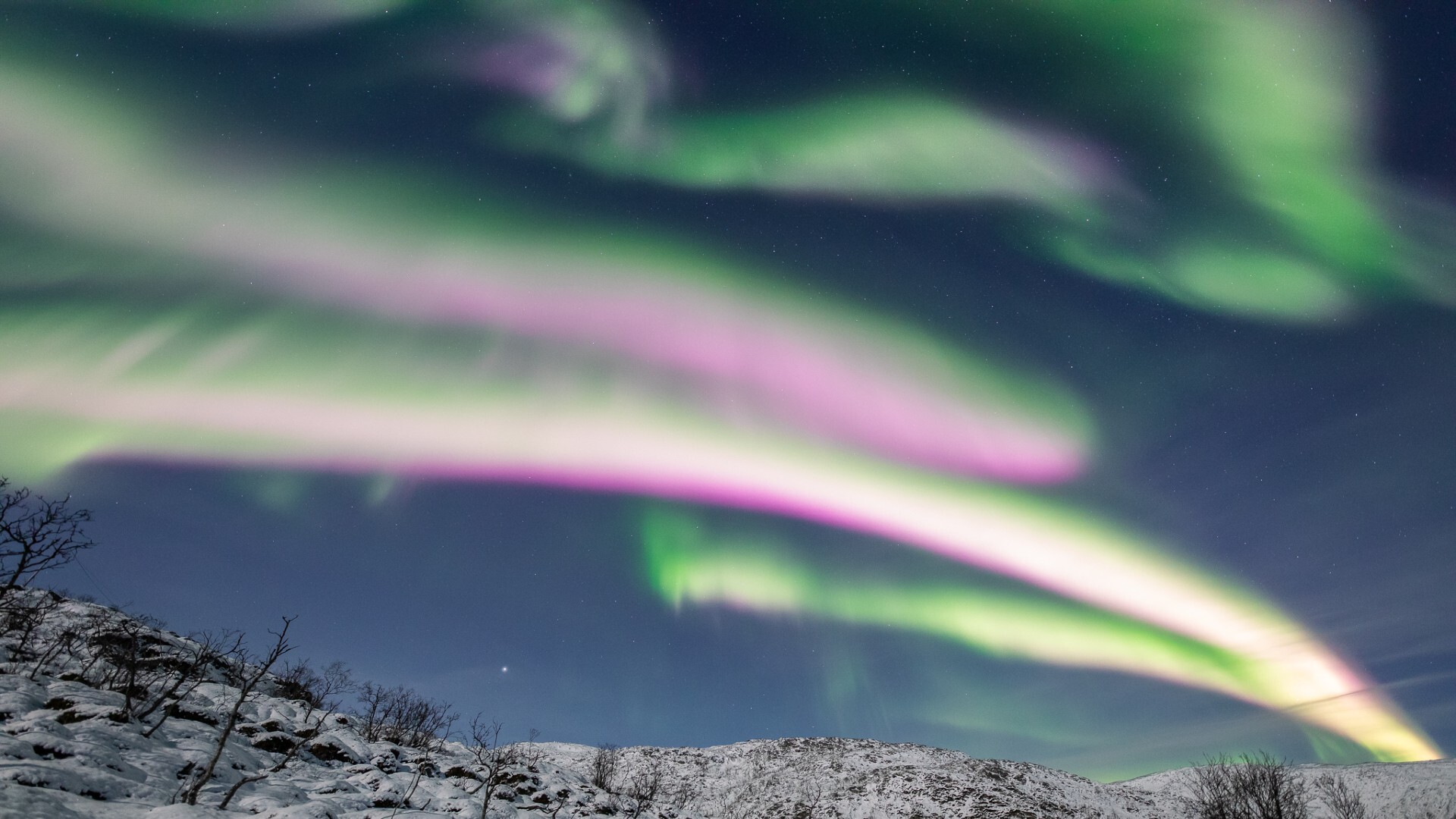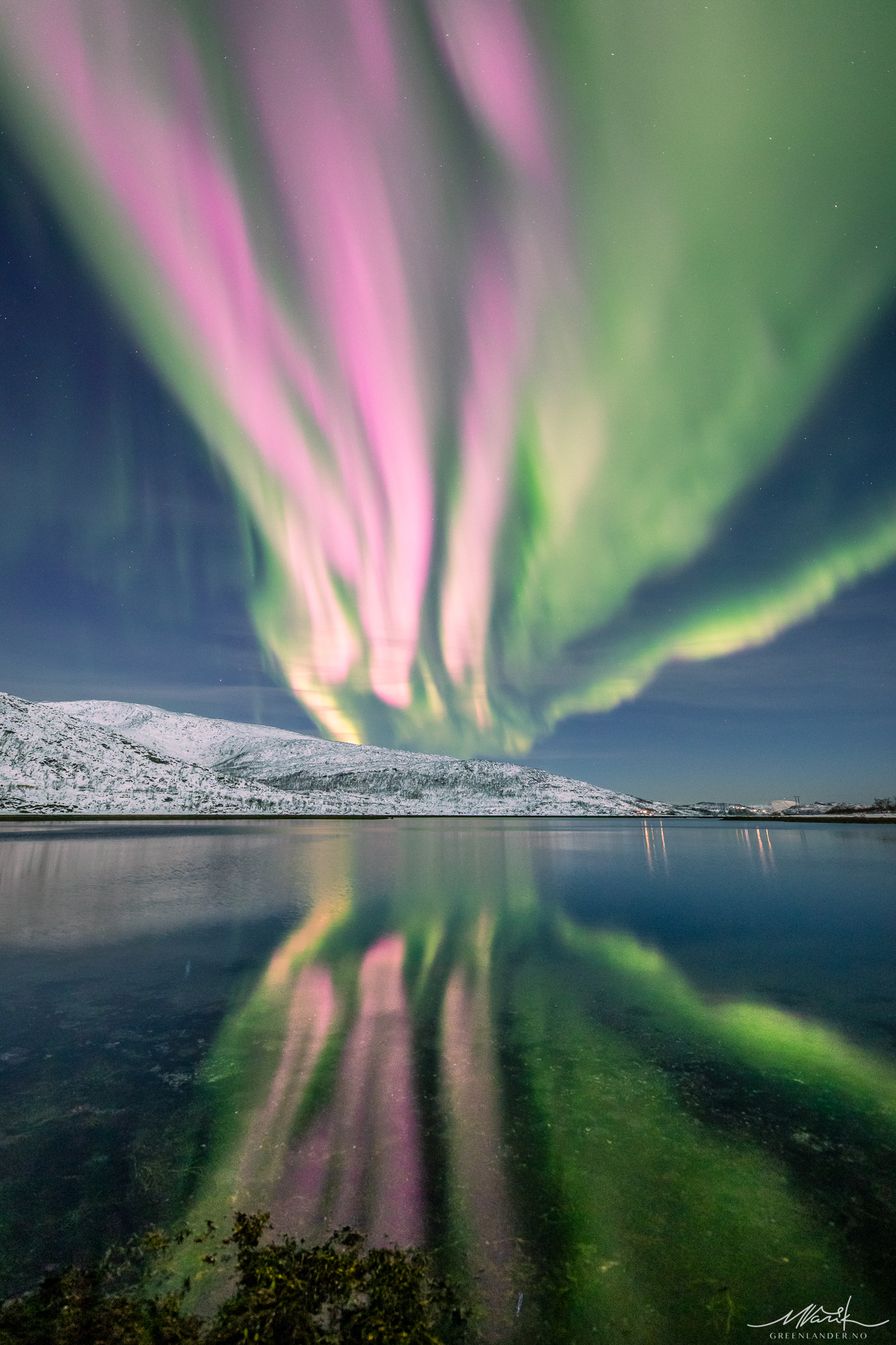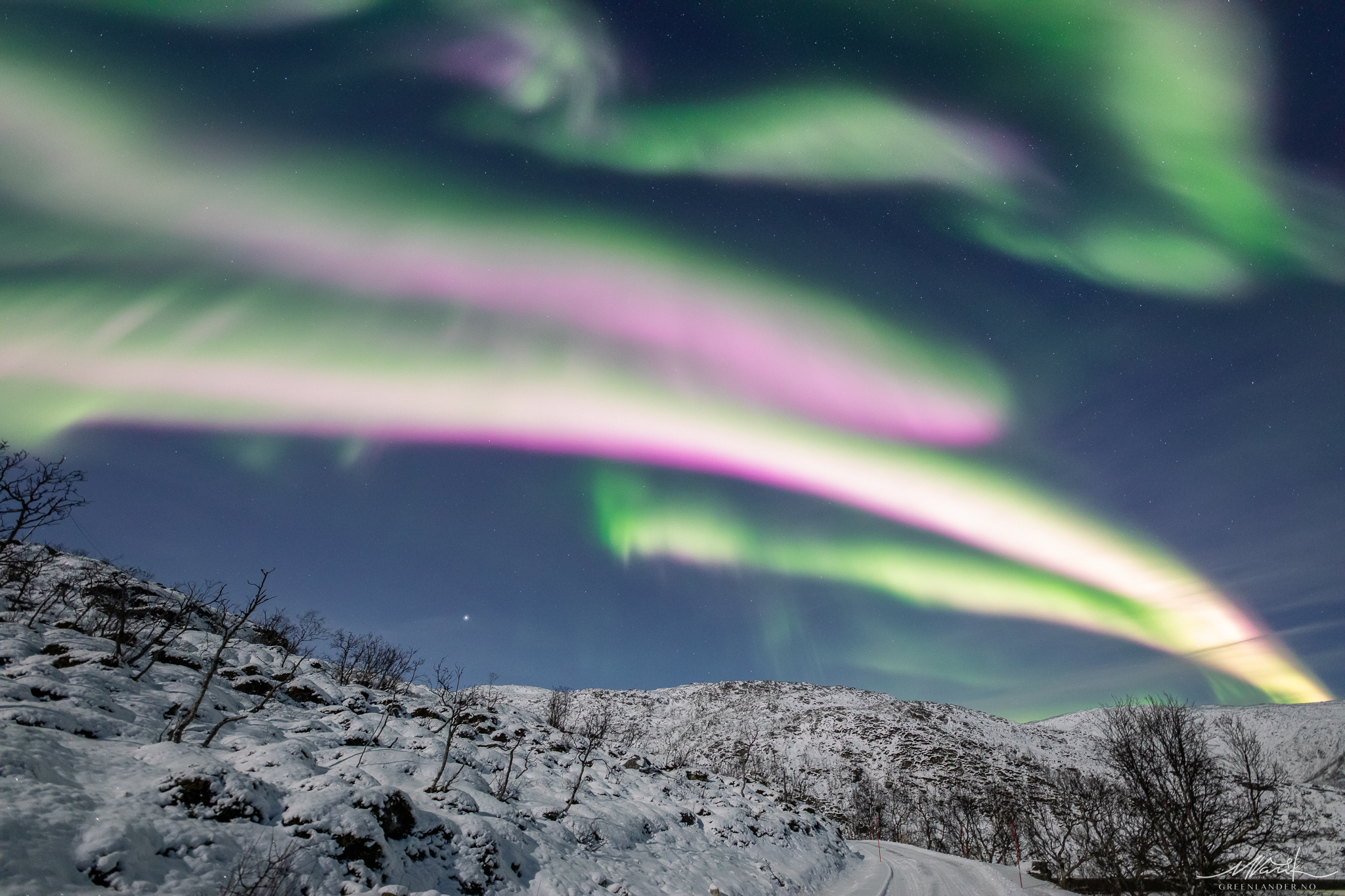Super rare pink and orange auroras surprise Norwegian skywatchers again
"No idea why auroras went orange, as I haven't seen that before."

For the second time in less than two months, Norwegian skywatchers were stunned by extremely rare pink auroras glimmering above the frozen landscape, which at moments turned into even rarer shades of orange.
The glowing displays were photographed on Dec. 10 by photographer and aurora chaser Markus Varik, who organizes polar light-watching trips near the Norwegian city of Tromso. Located 220 miles (350 kilometers) north from the Arctic Circle, the frosty countryside around Tromso offers perfect aurora watching conditions.
In fact, the latest pink aurora display took place while space weather forecasters predicted less than mediocre chances of polar light sightings.
Related: These astronaut photos of auroras seen from space are just breathtaking
Auroras are triggered when energetic particles from the sun penetrate into Earth's atmosphere and interact with the planet's magnetic field. The most stunning displays usually occur during geomagnetic storms when huge bursts of magnetized plasma emitted by the sun during so-called coronal mass ejections strike the planet's ionosphere, or upper atmosphere. But nothing like that was going on Dec. 10.
Varik and his group were taken by surprise by the pink glow that even turned orange in some places, which, the photographer said, is a very unusual sight.
"Sooo...the sky fell upon us again tonight," Varik said in a Facebook post on Dec. 10. "We already had very intense pink auroras in November and didn't think these would return anytime soon. Happy to be proven wrong. In the last image, you can even see some orange auroras. No idea why auroras went orange, as I haven't seen that before."
Get the Space.com Newsletter
Breaking space news, the latest updates on rocket launches, skywatching events and more!

Pink aurora hues are the result of the solar particles interacting with nitrogen in Earth's atmosphere, according to the Royal Museum Greenwich. That only happens when the streams of charged particles, also known as solar wind, penetrate deeper into Earth's atmosphere, some 60 miles (100 km) above the planet's surface. The more common greenish auroras, produced by the interaction of the solar wind with oxygen, appear at higher altitudes of up to 150 miles (240 km).
The previous pink aurora display that surprised skywatchers in November appeared after a relatively mild geomagnetic storm tore a crack in Earth's magnetic field, allowing the solar wind to flow into the deeper layers of the atmosphere. What exactly caused the display of Dec. 10 is a bit of a mystery.

Varik, who has been leading aurora-watching trips for over a decade, said he's never before spotted such intense orange hues as those mixed with the pink on that particular night.
"We were all so blown away, speechless, really," he said. "Aurora danced in the sky for minutes in a row. Must have been that the crack opened up in Earth's magnetic field and it was probably an even bigger crack than usual."
According to Auroranights.co.uk, orange polar light displays could be produced when the solar particles interact with the rare atmospheric gas neon.
Follow Tereza Pultarova on Twitter @TerezaPultarova. Follow us on Twitter @Spacedotcom and on Facebook.
Join our Space Forums to keep talking space on the latest missions, night sky and more! And if you have a news tip, correction or comment, let us know at: community@space.com.

Tereza is a London-based science and technology journalist, aspiring fiction writer and amateur gymnast. Originally from Prague, the Czech Republic, she spent the first seven years of her career working as a reporter, script-writer and presenter for various TV programmes of the Czech Public Service Television. She later took a career break to pursue further education and added a Master's in Science from the International Space University, France, to her Bachelor's in Journalism and Master's in Cultural Anthropology from Prague's Charles University. She worked as a reporter at the Engineering and Technology magazine, freelanced for a range of publications including Live Science, Space.com, Professional Engineering, Via Satellite and Space News and served as a maternity cover science editor at the European Space Agency.
-
karlp295 Friends have just moved to Molde in Norway and I plan one day soon to go there and see the Aurora for myself for the first time. This has always been one of my astronomical ambitions!Reply -
billslugg Good luck, auroras are hard to predict. I have seen them often in northern Ontario, also in Philadelphia and as far south as Georgia.Reply -
vas11e Super nice shoot! If of interest to anyone, Northern Lights are forecasted to be very active for the next two months. Have a look at aurora live webcams to view auroras right from your couch.Reply









